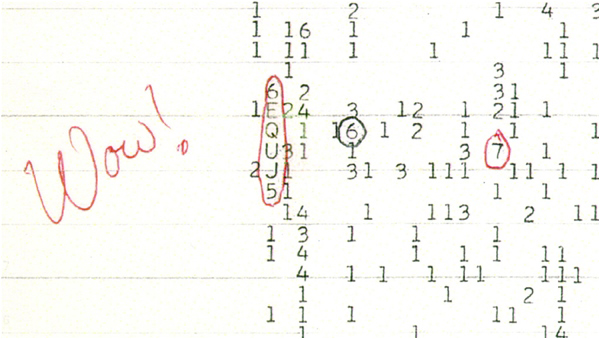
It really puts provincial petty politics – and indeed Life itself – into sharp perspective when humanity lands a probe onto a comet hurtling through space millions of miles away from earth. A moving asteroid, people! We just landed a man-made machine over a distance most of us can’t conceive of, onto a hot rock flying through empty space, at speeds we will never experience without being dead for a while first, and did it all without leaving the planet. Well. Done. Us.
The Philae probe landing is straight out of the movie Armageddon, where Bruce Willis lands on and then blows up another comet before it destroys the earth, all the while listening to country music. But that was a movie, as fictional as Ben Affleck’s career post-Pearl Harbour, and I thought an actual landing on a surface that alien stood about the same chance of occurring as Bruce Willis’ hair did of growing back on his scalp.
It still comes as a welcome surprise whenever I am reminded that despite our terrestrial squabbles and shortsighted selfishness, significant portions of the world’s wealth is purposefully spent on exploring the unknown frontier of space. I run the risk of sounding like Shatner from Star Trek’s opening credits, so I’m just gonna say how wonderful that makes me feel. I feel so proud of human genius that I want to twirl Stephen Hawking around and then hug him (I won’t, obviously).

No one can predict what we will find out through the probe. A faction of science theorizes that life on earth might have begun after a comet similar to this one struck our planet many billions of years ago. The implications of any discovery are, frankly, too vast to know right now. Armageddon had little to do with the actual probe landing, but it is amazing to think of all the things that have come from science fiction hurtling into the real work: submarines were based on Jules Verne’s fictional underwater ship, and cellphones are famously based on the walkie-talkies from Star Trek (I know, right?).
Carl Sagan is probably my favourite sci-fi writer, though it’s a disservice to label him as something so common. He was a visionary. His book (and later movie) Contact asked the most basic questions that drive Earth’s space programs: Why are we here? How did we get here? Are we alone?
But another thing it did was to pick upon a real-world event that still remains a mystery to us: the Wow! Signal.
Early on in our efforts to try and contact extraterrestrial life, a man called Jerry R. Ehman was working at SETI (a program for the Search of Extra Terrestrial Life). He was mainly monitoring radio frequencies, since radio waves can travel the furthest distance with the least energy, and are probably how aliens would communicate with us if they were so inclined. The discovery of just such a signal was the inspiration behind the plot for Sagan’s book Contact, in which a radio signal is sent to earth with coded instructions on how to build a portal between space and time and eventually leads to a psychedelic romp through wormholes.
Real world events were slightly less dramatic, but no less amazing. SETI had long been monitoring the frequency of 1420 MHz. That’s the frequency that the element Hydrogen resonates at and it is reasoned that since Hydrogen is the single most common element in the Universe, any civilization capable of interstellar communication would probably use it to transmit a strong signal, confident that those on the other side would have at least discovered radio and hydrogen (fair enough, really).
In 1977, Ehman chanced upon just such a signal at the 1420 Mhz frequency. It was 30% louder than normal deep space, and so was not white noise, and it could not have originated from earth. He penciled in the word “wow!” next to the data, and the name stuck. That’s the Wow! Signal, and it originated in the constellation Sagittarius (it pleases me no end that my Zodiac is a cosmic communicator). Scientists say that if the signal did come from extraterrestrial beings, they are likely a highly advanced civilization. The signal would have required a transmitter somewhere in the power range 2,200,000 kW. The most powerful transmitter on earth is the Bolshakovo transmitter, which produces a paltry 2500 kW.
We have searched for the signal since then but come away empty-handed. We haven’t lost hope. On the 35th anniversary of the signal, humans beamed a response from humanity, including thousands of twitter messages, directed at the origin of the signal. So far, we’re at the equivalent of celestial voicemail, leaving messages for someone we don’t know will call us back.
But Lord, I hope they do. I for one am ready to be spaced out.
Write to thekantawala@gmail.com and follow @fkantawala on twitter
The Philae probe landing is straight out of the movie Armageddon, where Bruce Willis lands on and then blows up another comet before it destroys the earth, all the while listening to country music. But that was a movie, as fictional as Ben Affleck’s career post-Pearl Harbour, and I thought an actual landing on a surface that alien stood about the same chance of occurring as Bruce Willis’ hair did of growing back on his scalp.
It still comes as a welcome surprise whenever I am reminded that despite our terrestrial squabbles and shortsighted selfishness, significant portions of the world’s wealth is purposefully spent on exploring the unknown frontier of space. I run the risk of sounding like Shatner from Star Trek’s opening credits, so I’m just gonna say how wonderful that makes me feel. I feel so proud of human genius that I want to twirl Stephen Hawking around and then hug him (I won’t, obviously).

No one can predict what we will find out through the probe. A faction of science theorizes that life on earth might have begun after a comet similar to this one struck our planet many billions of years ago. The implications of any discovery are, frankly, too vast to know right now. Armageddon had little to do with the actual probe landing, but it is amazing to think of all the things that have come from science fiction hurtling into the real work: submarines were based on Jules Verne’s fictional underwater ship, and cellphones are famously based on the walkie-talkies from Star Trek (I know, right?).
Carl Sagan is probably my favourite sci-fi writer, though it’s a disservice to label him as something so common. He was a visionary. His book (and later movie) Contact asked the most basic questions that drive Earth’s space programs: Why are we here? How did we get here? Are we alone?
But another thing it did was to pick upon a real-world event that still remains a mystery to us: the Wow! Signal.
Early on in our efforts to try and contact extraterrestrial life, a man called Jerry R. Ehman was working at SETI (a program for the Search of Extra Terrestrial Life). He was mainly monitoring radio frequencies, since radio waves can travel the furthest distance with the least energy, and are probably how aliens would communicate with us if they were so inclined. The discovery of just such a signal was the inspiration behind the plot for Sagan’s book Contact, in which a radio signal is sent to earth with coded instructions on how to build a portal between space and time and eventually leads to a psychedelic romp through wormholes.
Real world events were slightly less dramatic, but no less amazing. SETI had long been monitoring the frequency of 1420 MHz. That’s the frequency that the element Hydrogen resonates at and it is reasoned that since Hydrogen is the single most common element in the Universe, any civilization capable of interstellar communication would probably use it to transmit a strong signal, confident that those on the other side would have at least discovered radio and hydrogen (fair enough, really).
It pleases me no end that my Zodiac is a cosmic communicator
In 1977, Ehman chanced upon just such a signal at the 1420 Mhz frequency. It was 30% louder than normal deep space, and so was not white noise, and it could not have originated from earth. He penciled in the word “wow!” next to the data, and the name stuck. That’s the Wow! Signal, and it originated in the constellation Sagittarius (it pleases me no end that my Zodiac is a cosmic communicator). Scientists say that if the signal did come from extraterrestrial beings, they are likely a highly advanced civilization. The signal would have required a transmitter somewhere in the power range 2,200,000 kW. The most powerful transmitter on earth is the Bolshakovo transmitter, which produces a paltry 2500 kW.
We have searched for the signal since then but come away empty-handed. We haven’t lost hope. On the 35th anniversary of the signal, humans beamed a response from humanity, including thousands of twitter messages, directed at the origin of the signal. So far, we’re at the equivalent of celestial voicemail, leaving messages for someone we don’t know will call us back.
But Lord, I hope they do. I for one am ready to be spaced out.
Write to thekantawala@gmail.com and follow @fkantawala on twitter

